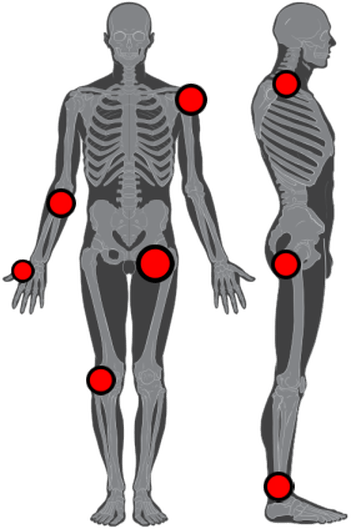TENDINITIS OR TENDINOSIS?
IT DOESN’T MATTER WHEN IT COMES TO ICD-10
“Tendinosis, is damage to a tendon at a cellular level (the suffix “osis” implies a pathology of chronic degeneration without inflammation). It is thought to be caused by microtears in the connective tissue in and around the tendon, leading to an increase in tendon repair cells. This may lead to reduced tensile strength, thus increasing the chance of tendon rupture. Tendinosis is often misdiagnosed as tendinitis due to the limited understanding of tendinopathies by the medical community. The term tendinitis should be reserved for tendon injuries that involve larger-scale acute injuries accompanied by inflammation.” From Wikipedia’s listing for Tendinosis
For instance, there is a code (V97.29) for your local airport’s luggage cart driver being sucked into a jet engine — without any damage to the aircraft. And if the driver happens to be a male under 5’5″, slightly balding, and wearing a tank top, who got sucked into said engine during a full moon, we can code for that too (V97.29&A#gE). It’s not all bad, as there are actually a few good codes to describe FASCIAL ADHESIONS. However, there is a major problem with the codes that describe Tendinosis.
Despite huge amounts of research showing that Tendinitis is either rare or does not exist at all (HERE), it is the only diagnosis I find when searching for the proper ICD-10 codes. I can find hundreds of diagnosis for all kinds of Tendinitis, but none — not a single solitary one —- for any form of Tendinosis. Is this a big deal, or am I making a mountain out of a mole hill? Let’s answer that by creating a chart concerning three things we know about Tendinitis, Tendinosis, and the treatment thereof.
- A.) If you read the quotes from the top of the page, or take a quick glance at the link above (or THIS ONE), you quickly realize that not only is Tendinitis rare, there is actually some debate about whether or not it even exists at all (in other words, some experts believe that everything we are diagnosing as Tendinitis is actually Tendinosis).
- B.) After looking on any number of websites (my favorite was ICD-10 Data), the ICD-10 Chirocode Book, as well as notes / materials from Drs. Ron Short, Gary Street, and Evan Gwilliam, I can’t find any diagnosis information on Tendinopathy, let alone Tendinosis. However, I can find hundreds upon hundreds of listings for Tendinitis and Tenosynovitis (an inflammation of the sheath surrounding the tendon).
- C.) The suffix ‘itis‘ means that the problem is based on INFLAMMATION, while the suffix ‘osis‘ indicates that the tendon has become frayed, weakened, and microscopically deranged. In order to fix a Tendinosis, you had better be about the business of doing something to INCREASE FIBROBLASTIC ACTIVITY. In order to effectively treat true Tendinitis, you need to diminish Inflammation (HERE is how I suggest to do that). How do medical doctors typically accomplish this? Although they commonly go all-in by prescribing the “BIG FIVE” —- especially for people with SYSTEMIC TENDON ISSUES they don’t really understand — they are almost surely going to prescribe CORTICOSTEROIDS and NSAIDS. If you click the links, you’ll see that not only are these drugs well known for their brutal side effects, but the ‘Standards of Care’ that are supposed to guide their use actually recommend against using them for tendon problems (see link on corticosteroids directly above). This is unfortunate for patients who wind up being treated 180 opposite the most current EVIDENCE-BASED guidelines.
So, while I can put down a code that says you were struck by a turtle (W5922XA), are having problems with your in-laws (Z63.1), fell into a bucket of water and drowned (W16.221), have a bizarre personal appearance (R46.1) and were injured while doing arts and crafts (Y93.D), were seriously burned when your water skis caught fire (V91.07XD), had an injurious collision with a spacecraft (W22.02XD: V95.43XS), or suffered a non-venomous insect bite on your anus (S30.867) while attending the opera (Y92.253), I am forced to use Tendinitis codes that were outdated two decades ago to describe my patient’s Tendinosis.

